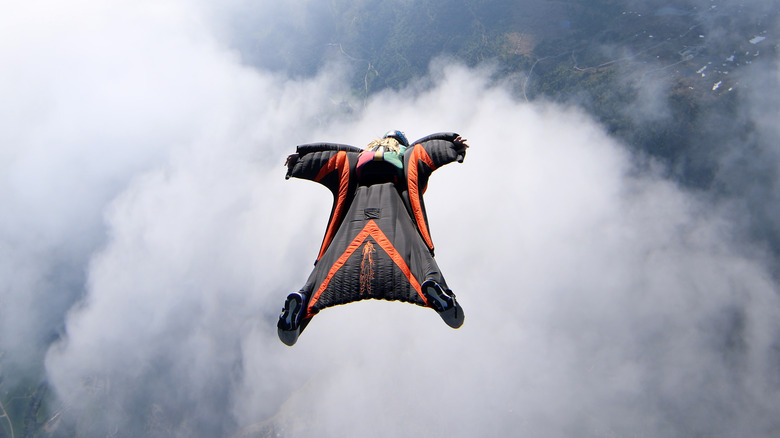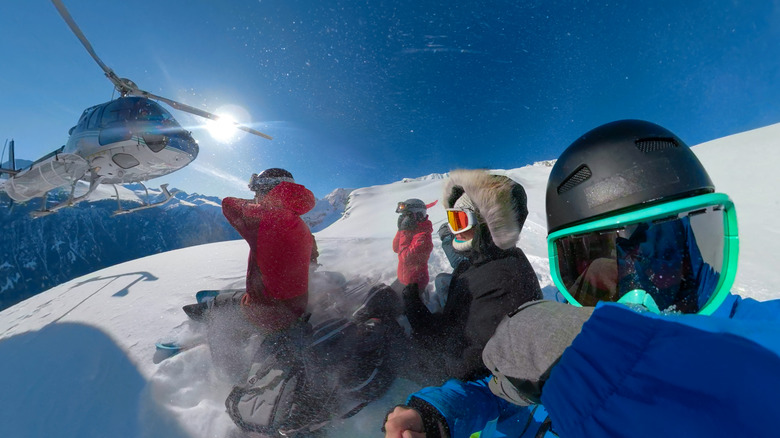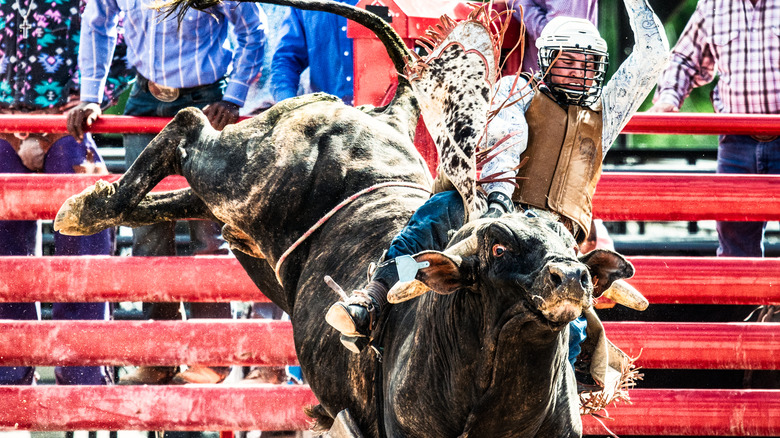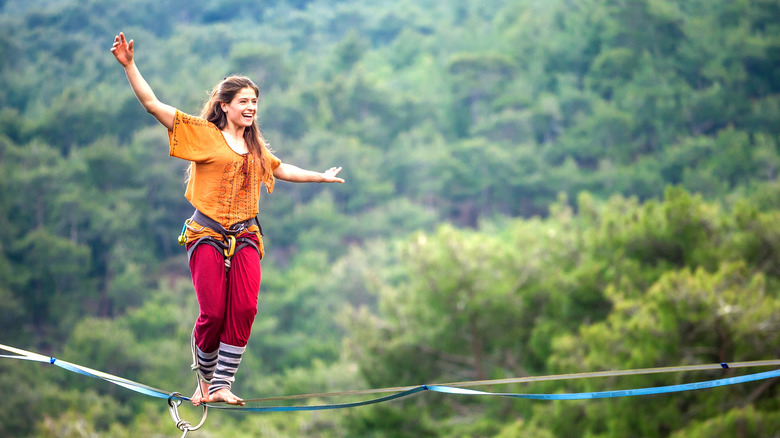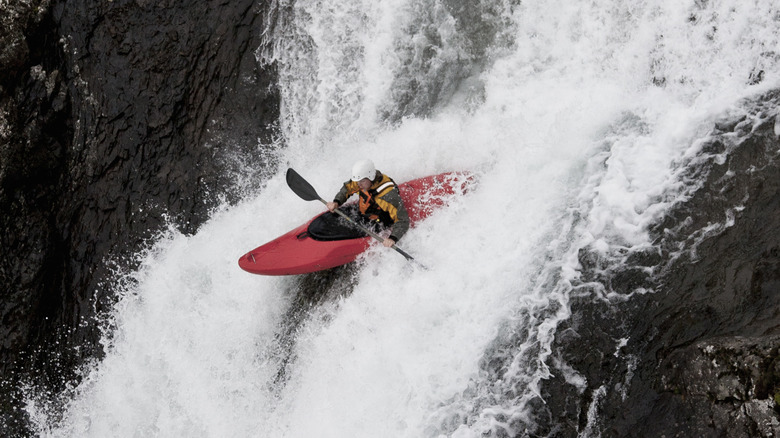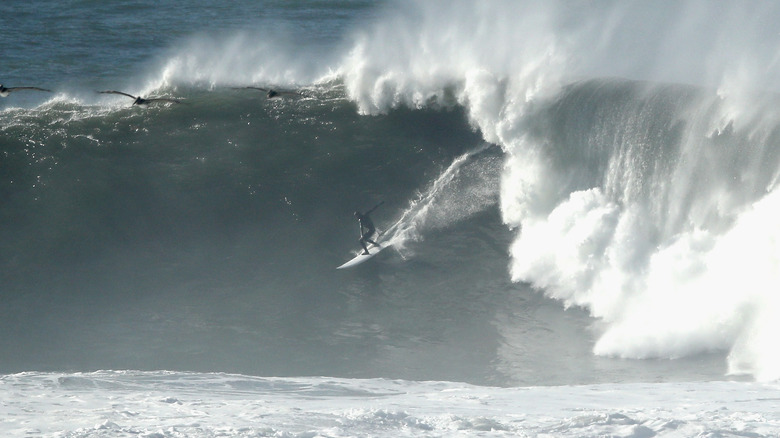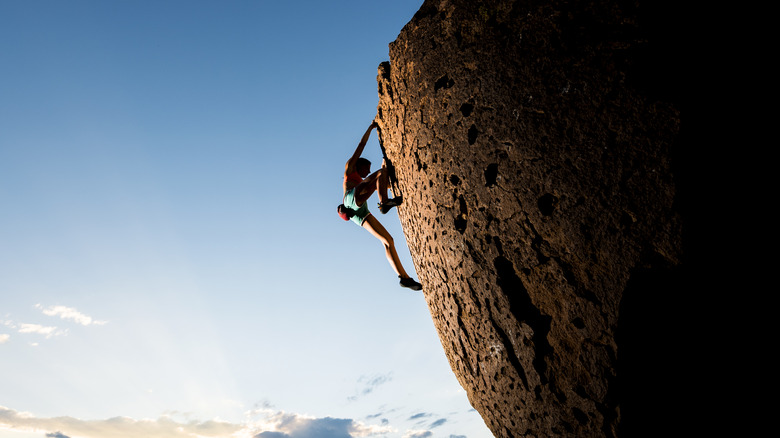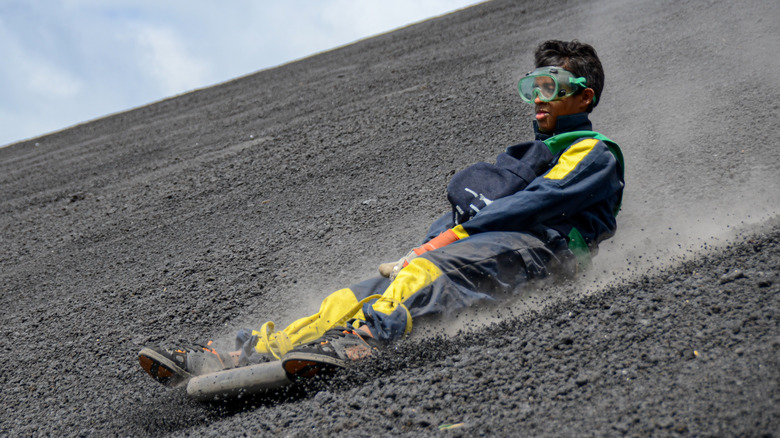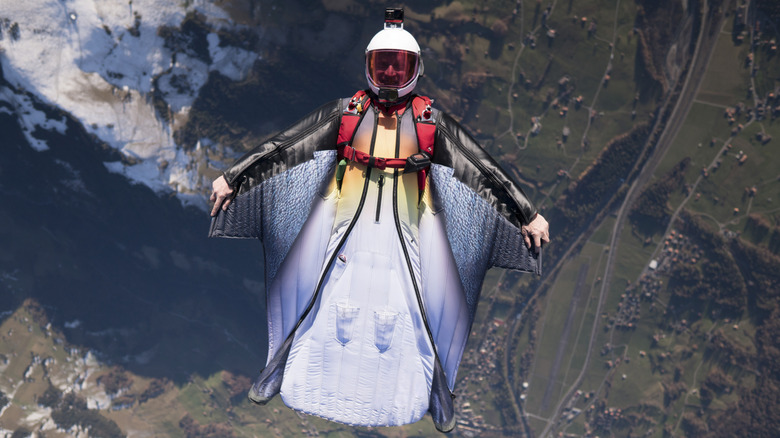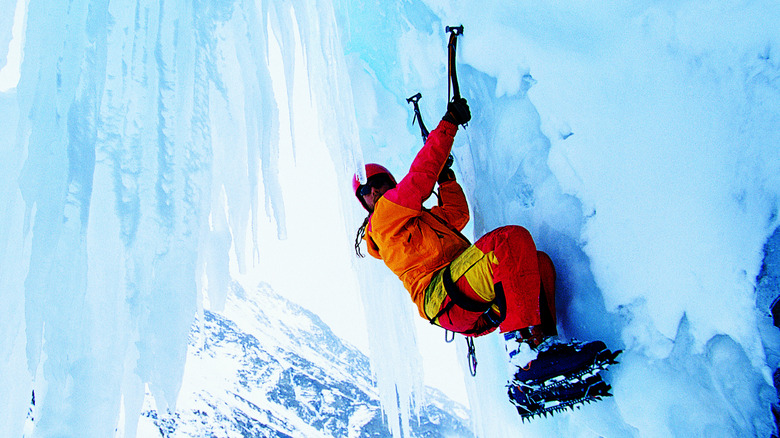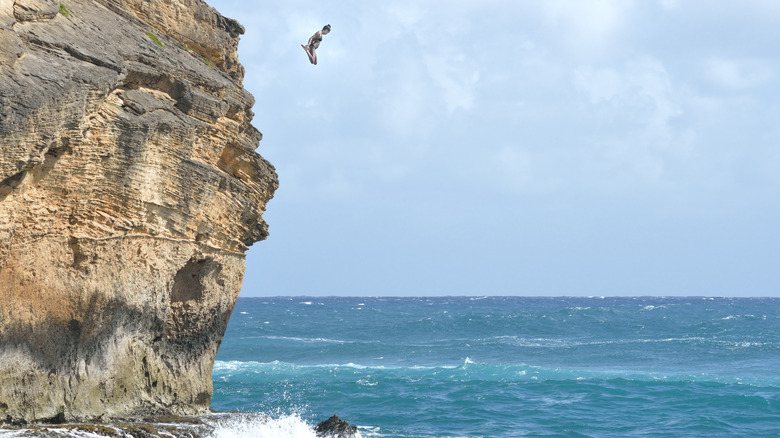15 Extreme Sports That Can Kill You
Extreme sports are a part of the human experience. For as long as people have been looking for ways to entertain themselves, they've stumbled upon adrenaline-inducing speed, height, and other conditions. For the most ambitious thrill seekers around, it's not enough to participate in sports that go fast and fly high; these pursuits require a death-defying element as well. Sports like wingsuit flying and street luge push what is possible to the outer edge. They provide some of the most thrilling highs a person can find. But these and other sports come with a darker side.
While chasing after the most exhilarating feeling imaginable, many extreme sporters have perished in their pursuit. From high-speed impacts to falls from incredible heights, these fifteen extreme sports shouldn't be tried by the faint of heart due to their risky nature. Safety processes make modern participation safer for today's athletes than those of the past for many of these sports, but the risk of death remains a permanent fixture among them.
BASE jumping
BASE jumping is one of the deadliest sports you'll find. Dozens of people routinely perish in the pursuit of intense flight speeds and a furious descent weaving through the natural environment. BASE stands for Buildings, Antennas, Spans, and Earth, representing the various starting points for the typical winged dive that BASE jumpers summit in order to get their thrills. The typical jump begins with a leap of faith off a tall object. Once in freefall, the jumper will open their arms and legs to expose the wings of their suit. From there, minute physical maneuvers allow a jumper to glide through the sky before ultimately pulling their parachute and slowing down for a landing at the end of the run. It's been called the most dangerous sport in the world, with 250 confirmed fatalities as of February 2015, and many more since.
Most injuries and deaths in the sport are related to equipment failure, but the conditions under which a jumper takes a flight can contribute to the danger in intimate ways. An improperly packed parachute won't slow a free fall fast enough to create safe landing conditions, but gusty or foggy conditions create the same kinds of hazards. For the most extreme BASE jumpers, rough weather is all part of the excitement and fun, but it makes for a much riskier run.
Heli-skiing
Heli-skiing is, in a way, the wild west of snow sporting. It's an off-piste skiing adventure that adds in a layer of remoteness that isn't accessible without the help of a helicopter. Heli-skiers are lifted to their starting point by helicopter pilots, and then left to traverse the off-trail landscape, eventually returning to civilization at the end of the run.
Heli-skiing is dangerous for a variety of reasons, but the rush that skiers get from the whip of wind on a lonely mountaintop as the helicopter departs is a truly majestic thrill. For one thing, a heli-skier is subjected to the potential for mechanical failure or operator error during the ascent. If the weather conditions aren't ideal, a helicopter pilot might be flying somewhat blind up to a remote summit with little in the way of assistance able to follow closely behind. After arriving at the starting point, however, a heli-skier is faced with another hazard. The off-trail nature of the sport means that the terrain isn't marked for trail routes, and it hasn't been prepared. It's possible to get lost or ski into a crevasse or snowbank and become trapped. The sport is becoming more popular, and quickly, with a surge of novices taking up the extreme endeavor. This has led tour companies to include shovels, transponders, and oxygen in their kits to help mitigate the dire risks of getting buried in deep snow.
Cave diving
Scuba diving on its own is somewhat dangerous. At depths beyond the 30-meter threshold (about 100 feet), all divers, regardless of their experience or natural skill level, begin to experience the effects of nitrogen narcosis. Its effect has been described as something similar to alcoholic intoxication, with disorientation and the potential to confuse the seafloor for the surface as common features. Personally, my experience with the phenomenon has most notably been a relaxation of the jaw—leading to worry over losing the regulator amid this disorienting feeling. It's for this reason that only advanced divers are certified to get anywhere near this depth (beginners are capped at a 60-foot maximum depth).
While judgment issues (like failing to properly equalize ear pressure or ignoring a dwindling air tank) are most often the cause of injury and death while diving beneath the surf, there's a particular subsection of divers that explore the depths in a unique and continuously hazardous format. From start to finish, a dive that involves a cave structure beneath the water has the potential to end a life, even through the simplest of accidents. Cave divers explore the submerged world of aquatic cave structures and can become trapped, get a line stuck in the rock formations, or become lost. Even the most experienced cave divers are susceptible to these dangers, and therefore this style of diving is heavily restricted as well. However, for the bravest divers out there, the immaculate waters of a submerged cave system are a sight to behold!
Bull riding
Bull riding has been called "the most dangerous eight seconds in sports." Riders climb atop a bull that's raring to launch them once the gate opens and the timer starts. Professional bull riders have become a mainstream subset of extreme athletes, and the payout for winning at the competitive level can net riders millions of dollars over the course of their careers. But with the potential riches comes a seriously dangerous endeavor.
The sport involves an animal, meaning the rider really doesn't enjoy any control over the way their run will unfold in the same way that a Formula 1 driver might. The bull might successfully catapult its rider and dump him awkwardly on his head, back, or limbs. The animal could also trample or headbutt the rider; there's just no way to predict how a ride will unfold before it happens. Moreover, even when a bull rider remains atop the steer for the duration, the violent jolting can result in quite a bit of physical trauma. Add to this the fact that a bull rider can only hold on with one hand, and you've got a wildly exciting sport that lies at a solid extreme while posing great bodily danger to those who participate.
Mountain climbing
As of 2023, the ten deadliest mountains in the world have claimed the lives of 909 people. Icons like Mount Everest (310 deaths) and Annapurna I (73 deaths) are found in Nepal's towering ranges and represent some of the tallest mountains in the world. For casual participants, mountain climbing is a leisurely (or maybe brisk) stroll up what's essentially a continuous incline. At the end of the hike — which might take one or more hours to complete — climbers will be treated to awe-inspiring sights of the now-microscopic landscape below.
But at any level, mountain climbing can be a dangerous proposition. An injury on even the most beginner-friendly mountain can result in an agonizing descent that takes exponentially longer than under normal conditions. Weather can change dramatically throughout a climb, too, potentially exposing hikers to severe drops in temperature, gusting wind, or torrential rain that they weren't prepared to handle. On the largest mountains this Earth has to offer (of which the tallest 14 are called "eight-thousanders" in a nod to summits reaching above 8,000 meters), these risks are magnified, and the threats of avalanches, oxygen thinning, and treacherous passage over crevasses are added to the mix.
Highlining
Highlining is a more extreme form of slacklining. The balancing sport is fairly tame when performed close to the earth, but it takes on a new dimension when raised to extreme heights. Slacklining is a great way to develop increased core strength and balance, but taking it up a notch with the transition to highlining adds a serious excitement element to the mix.
Highliners seek out insane heights for their acrobatic performances. Walking along ropes suspended over bridges, buildings, or natural mountain formations really gets the blood pumping, and it can seem incredibly dangerous to the untrained eye. In reality, highliners take on these challenges with a raft of safety measures in place. Even so, the majority of injuries that participants suffer appear to be related to improper use of safety equipment. Broken bones, torn ligaments, and severe bruises can result from the intense forces felt during a fall if the harness isn't being used correctly. With that being said, there have been three documented fatalities resulting from highlining incidents. If the line fails or the harness isn't able to catch the highliner, a long tumble is almost assuredly the outcome.
Creeking
Creeking is a bit of a wild adventure sport. Extreme sport enthusiasts who participate in creeking will arrive at a rushing water body in the same way a white water rafter or adrenaline-chasing kayaker might. But instead of strapping into a substantial watercraft to take on the violent twists and turns of the water, a creeker will take the plunge in a very small, special-purpose creeking boat and then careen over the roughest aquatic terrain possible – often involving sizeable drops and multiple steep declines. This can include waterfalls, rapids, rocky sections, and more.
Because riders will be searching for the most physically torturous waters around, the potential to become dislodged from the boat and thrown along the course without any protection is high. Creekers can also end up trapped underwater or dive off a misjudged height and become injured or incapacitated as a result of the impact. Creeking is a truly extreme aquatic sport, though, and chasing after speed and the deft twists and turns that make up a successful run can be exhilarating.
Tow-in surfing
Tow-in surfing is practiced by the most experienced surfers around while trying to access gigantic swells. The most extreme waves, like the Mavericks in Northern California, often require a bit of help to get riders into position. The surf is so treacherous and powerful that simply swimming out to meet the crashing peaks is either too dangerous or too difficult. Surfers looking to ride these monstrosities anyway came up with tow-in surfing as an effective workaround.
Via a tow cable attached to a boat or jet ski, a surfer will be towed out to their starting position in the water. Then, when it's time to let rip, the surfer will let go of the cable and start their ride. This is a dangerous surfing format, to be sure, since the practical use is relegated to only the most extreme of surfing conditions. The speed and force of these mammoth waves make the sport incredibly hazardous, and just the act of getting out to the potent aquatic ridges is a potentially deadly proposition considering the choppiness that often comes along with this level of height.
Free soloing
Mountain climbing is a fairly intense sport, but some of the best climbers on the planet try their hand at pushing this feat to its most extreme. Free soloing is the art of mountain climbing without the restrictive — and life-saving — addition of safety gear like ropes and harnesses. Free soloers expose themselves to grave risk when they strike out on the trail, since a tumble from more than just 30 feet can result in fatal injuries. The reality of free soloing is that most accidents result in death rather than injury because any safety gear that a climber might wear simply won't protect them from a high-velocity impact. One wrong move can see a climber fall off the face of a rock wall hundreds of feet up in the air.
Free soloers are some of the most thrill-seeking climbers out there though. In 2017, free soloer Alex Honnold – considered one of the world's most elite climbers of any sub-discipline — summitted the El Capitan rock wall without ropes. It was the first time anyone had ever free soloed the 3,000-foot granite face. But he spent more than a decade considering the route and preparing for the climb before giving himself the green light to make the ascent.
Volcano surfing
Volcano surfing is exactly what it sounds like. A version of the sport has been around for 2,000 years, and is known as He'e holua in the native Hawaiian language. Sledding down volcanoes has also been done in other Pacific rim locales like Nicaragua, Indonesia, and elsewhere. Today, Hawaiians and other thrill seekers alike have resurrected a few different formats for this exhilarating display of bravery and adventure.
In short, the concept involves sledding or surfing down the sandy, rocky side of an active volcano (of which there are plenty throughout the Hawaiian islands). The volcanic activity can pose a significant risk to the health of participants. It's impossible to predict what an active volcano will do, so further eruptions can't be completely ruled out, even if explosive activity is unlikely. Similarly, lava and volcanic ash can be extremely hot, potentially burning a rider if they aren't careful. Lastly, in its modern incarnation, the sport has become a high-speed pursuit. Riders are often looking to fly down the side of these mountains as quickly as possible, and the rocky terrain makes for a hazardous descent.
Wingsuit flying
Flying through the air with a wingsuit is one of the most exhilarating extreme sports that you can participate in. The suit is built with specially designed wings between the legs and under each arm. By stretching out each limb to resemble a bird's wings and tail geometry, wingsuit flyers are able to create a powerful lifting force that sees them fly through the air rather than plummet as a skydiver might. The result is an aerial sport that's all about adventure and style as participants maneuver through the airborne environment. Wingsuit flyers may jump from a height or depart for the ground from an airplane, just like traditional parachuters. At the end of their run, a wingsuit flyer will pull the cord and deploy a parachute to return safely to the ground.
The path from sky to Earth is breathtaking and offers a supreme rush for riders, but the sport is incredibly dangerous. It's estimated that as many as one in every 500 wingsuit jumps ends in a death, with at least 400 known fatalities having been experienced in the community. A lot can go wrong during a flight. The tremendous forces of gravity and air can throw a flyer off course, and a lapse of judgment can see a midair collision take place. The danger is a natural feature of many extreme sports, but it's particularly pronounced in the realm of wingsuit flying.
Ice climbing
Like many extreme sports out there, ice climbing is a variation on other climbing disciplines that adds something new and highly dangerous to the mix. Ice climbing is a lot like traditional rock climbing. It involves the use of secured ropes and specialized planning to scale the face of a rock or sheer mountain cliff. But ice climbing adds frozen landscapes into the equation, making for an incredibly cold climbing environment. The change of scenery also means that ice climbers must rely on additional equipment to grip the climbing environment. From crampons and purpose-built footwear to ice axes that help grip the climbing surface, the task is simply different.
As well, rock climbers often rely on pre-placed bolts that are secured along climbing routes. They are rated to withstand the force of repeated falls, so coming off the wall really isn't a major concern for rock climbers who practice good safety. Ice climbers cannot allow themselves to fall, however. Screws are placed in the ice while traversing a cliff, but the hold is only as good as the ice will allow, and they often fail when put under stress. Add in the threat of falling ice or avalanches, and you're looking at a much more hazardous climbing sport.
Cliff diving
Cliff diving is a professional sporting activity, and the best compete in competitions around the world, diving from extreme heights into lakes, rivers, and other waterbodies below. In 2015, Laso Schaller broke the record with a 58.8-meter (almost 200 feet) jump off of the Cascata del Salto in Switzerland. It's an adrenaline rush unlike nearly any other, but the sport is also one that can become dangerous or deadly in the blink of an eye. The true threat of injury or death comes from the speed. A 20-foot dive can see participants accelerate to 25 miles per hour before reaching the water.
At that speed, when the water rushes up to meet a diver, it can feel like the force of a car wreck is exerting itself on their body. At higher starting points, the force only increases alongside the added speed. An improperly positioned body can result in significant injuries to the diver. As well, it's worth remembering that the end point is in the water, so a head injury can potentially leave a diver unable to find their way back to the surface.
Wing walking
Wing walking is another truly wild one. Riders strap themselves to the wings of an airplane, and then the plane takes off and flies around with the rider standing on the craft! This sport is an exhilarating one, but it can leave participants injured or killed as a result of multiple potential failings.
For one thing, because the pilot must take care to protect the rider attached to their plane, an increased risk of operator error is introduced into the environment. With additional concerns comes increased strain to perform, making for a uniquely stressful cockpit. Weather conditions can also complicate a wing walking flight, making the practice dangerous or even exposing a walker to lightning strikes. High-speed collisions with birds and other flying animals can also result in severe injury. But the act of wing walking alone — even without complications — can produce significant stress on a participant's body.
Street luge
Street luge is essentially the pavement-based variant of that intense series of sledding events that captivate audiences at the Winter Olympics every four years. Street lugers sit down on what is akin to a skateboard and then launch themselves down steep, paved hills. The practice grew out of skateboarding culture in 1960s and '70s California, but quickly became more of an underground event after serious injury became almost the norm in organized events. Today, street lugers often reach speeds of 60 miles per hour on their specialized boards and therefore require enormous precision when it comes to reaction time.
Street lugers expose themselves to intense bodily harm, but the adrenaline found in the speed is second to none. It's thought that thousands of organized street luge competitions are held around the world every year, signaling that the extreme sport has continued to thrive with the rise of the X-Games and other high-intensity sporting cultures.
